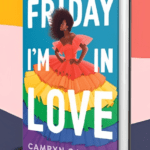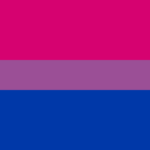The Queer Influence on Fashion
The Fashion Industry is Pretty Queer
Fashion has always been a core part of the queer community. As a result of the discrimination this group has faced over the centuries, LGBTQ+ individuals have resorted to expressing themselves in whatever form they can, and this includes fashion in a big way.
Although the idea of fashion is constantly evolving, LGBTQ+ individuals who work in the industry frequently adhere to clear-cut declarations and trends. And, even though it’s cliche to claim that clothing speaks, it does convey information about a person’s personality, and as a result, someone automatically assigns them to a subgroup inside the collective subconscious.
According to Fred Davis in his book Fashion, Culture, and Identity, fashion serves as a means of social difference by classifying people into subcultures depending on what a certain style denotes about a person’s lifestyle.
The Age of Expression
Most sexuality studies agree that the 18th century was the time when people first recognized the differences between homosexual and heterosexual sexualities. They did not differentiate the gay community in the previous sexual regime, therefore all males dressed similarly. Then, gay people in London started using their clothing as a means of identification, which changed the way people express their gender and sexuality.
Many would also argue that one of the key elements that unify queer people is fashion. The entire fashion business has been profoundly impacted by LGBTQ people for decades. And, as a result, for many years to come, they will research the connection between sexuality and clothing.
World War ll was another sociocultural turning point for fashion as women replaced skirts with overalls and hard labour replaced housewifery after being enlisted into artillery war efforts. At the time, there was also a widespread absorption of masculinity, which liberated women all over the world. And, while this masculine style was merely functional for others, many queer women were able to explore their gender in ways that were previously impossible.
LGBTQ Contributions to Clothing Liberation
To a certain extent, until recently, those in the LGBTQ community could accurately spot other members of the community based purely on how they dress and express themselves through clothes. But, in recent years, the lines have been blurred, which can be attributed to the mainstream fashion industry’s rising flamboyance. While adhering to the aesthetics of various LGBTQ subcultures, designers have delved deeper into the popularity of gender-fluid clothing, lessening the rigidity of male and female clothing constructs.
With so much fashion influence coming from gay culture, especially in the men’s department, it’s difficult to deny the significant influence they have on fashion and design. Gay clothing designers have replicated conventional looks and statements and added extra glitz and sex appeal for those looking for bold options. Gay designers developed a fashion language that appears to be dictating the industry.



